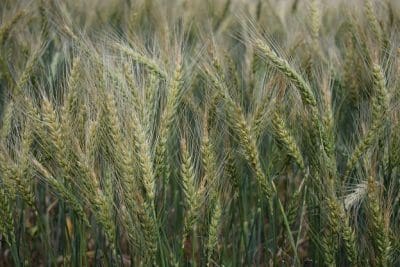WESTERN Australia’s final figure for winter crop production in the 2017 season has well surpassed initial predictions, coming in at 14.27 million tonnes (Mt), according to the Grain Industry Association of Western Australia’s (GIWA) latest crop report.
 Mid-way through last year as the WA crop struggled through a particularly dry season, pundits were predicting a crop of only 9Mt, way behind the 2016 total production of 18.2Mt.
Mid-way through last year as the WA crop struggled through a particularly dry season, pundits were predicting a crop of only 9Mt, way behind the 2016 total production of 18.2Mt.
But spring rains in September and October and a soft finish turned the season around dramatically, pushing 2017 production up to a very respectable 14.27Mt.
Wheat production was 25 per cent lower than the record year of 2016 due mainly to the poor year in the north and northeast of the state.
Lupin production was down 37pc from 2016, reflecting the poor season in the north where the majority of the lupins are grown.
Production of barley and canola in the state was down slightly from 2016. The majority of barley is grown in the southern regions where growing conditions in 2017 were good.
Canola production held up from 2016 due to increased plantings in 2017 and good yields in the southern areas of the state, although seed supply was an issue.
It was a record year for the Esperance port zone with just under 3Mt production for all grains.
Grain quality
Grain weight was high in all regions and screenings low, a function of the soft slow finish with minimal frost. Little grain was rain affected at harvest and/or downgraded from adverse climatic events.
Protein in wheat and barley was generally low due to dilution from higher than expected yields. It was a difficult year for growers to manage inputs as most had not experienced such a late start combined with such a good finish.
There was more noodle wheat produced than predicted with increased production from the north and south of the state.
Canola oil quality was high due to the slow cool finish and contributed significantly to the profit margins of canola crops.
Lupin tonnage was hit hard by the poor season in the north of the state where traditionally most of the lupins are grown. Some of the newer varieties performed well in the central and south of the state and may in future contribute more to production than in the past.
Milling oats have been steadily increasing in area and depending on price stability, may continue to do so as current demand continues to increase.
Field peas finally had a good year and whilst growers may move into more plantings based on success in 2017, there was a noticeable increase in chickpea, lentil and faba bean test plantings around the state.
Seasonal Outlook
The WA Department of Primary Industries and Regional Development’s Ian Foster said summer rainfall for 2018 thus far had been well above average across most of the agricultural region, coming mainly from Tropical Cyclone Joyce in mid-January as well as thunderstorm activity.
In contrast, rainfall along the South Coast has been light. Soil moisture storage follows the pattern of January rainfall with greater storage along the far eastern part of the northern agricultural region, as well as western parts of the central region.
There is also stored soil water across much of the northern region (except western parts), in contrast to low levels of storage across eastern and southern parts.
The latest seasonal climate outlook modelling runs have reduced the expectation for above average rainfall over southern WA for February, thus reducing the chances for gains in soil moisture.
Early outlooks for March to May suggest drier than normal conditions are more likely over southern WA. This scenario is similar to the lead up to the 2017 growing season.
The Bureau of Meteorology seasonal outlook for February to April predicts:
- A wetter than average February to April for most of WA except the southwest corner. Smaller patches in the tropical north and the far southeast of Australia are also likely to have a wetter three months.
- February is likely to be wetter than average for western and southern Australia, extending into southern Queensland.
- Weak La Niña conditions are present in the tropical Pacific Ocean. Models suggest this event will end by mid-autumn.
- Historical outlook accuracy for February to April rainfall is moderate across much of the eastern half of Australia, western WA, and the top end of the Northern Territory. Elsewhere, accuracy is generally low to very low.
Source: GIWA
Full report: http://www.giwa.org.au/_literature_238126/GIWA_Crop_Report_-_February_2018
Grain Central: Get our free daily cropping news straight to your inbox – Click here

HAVE YOUR SAY